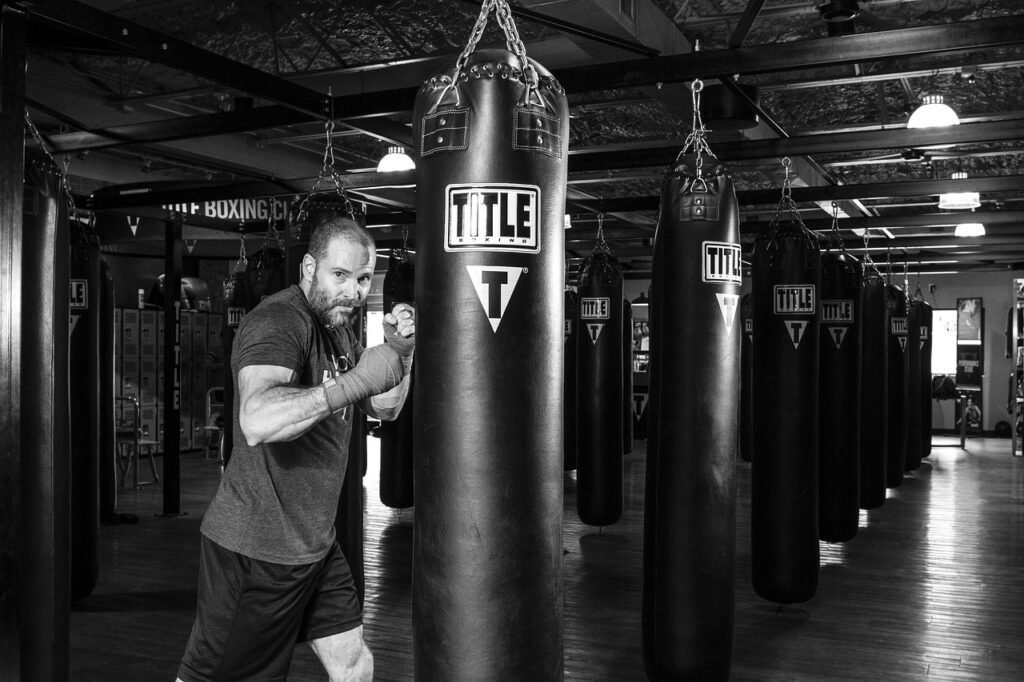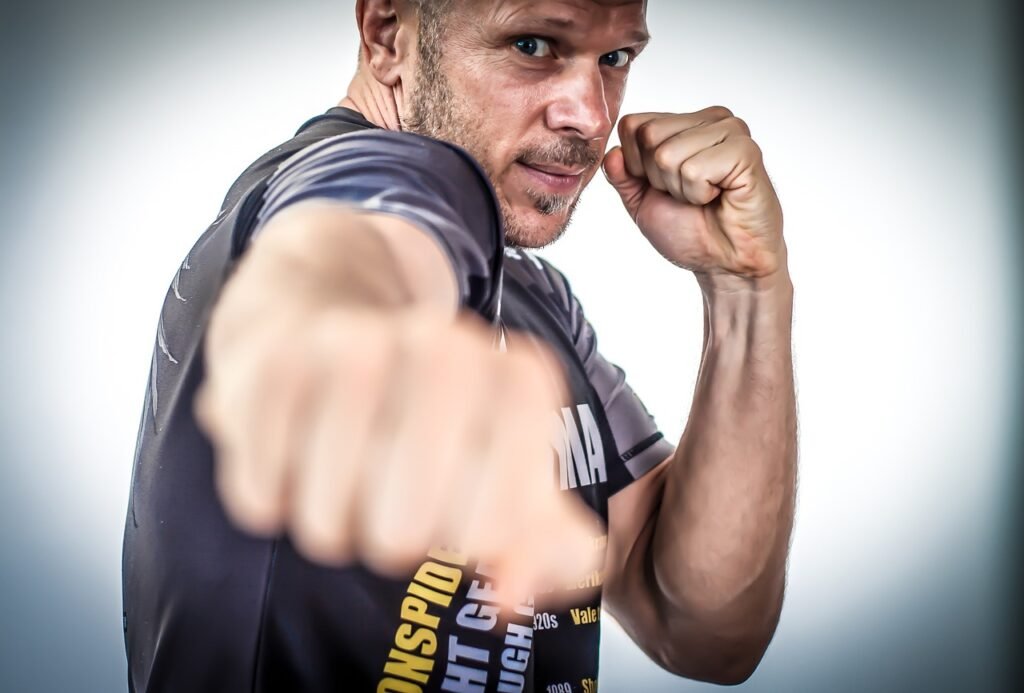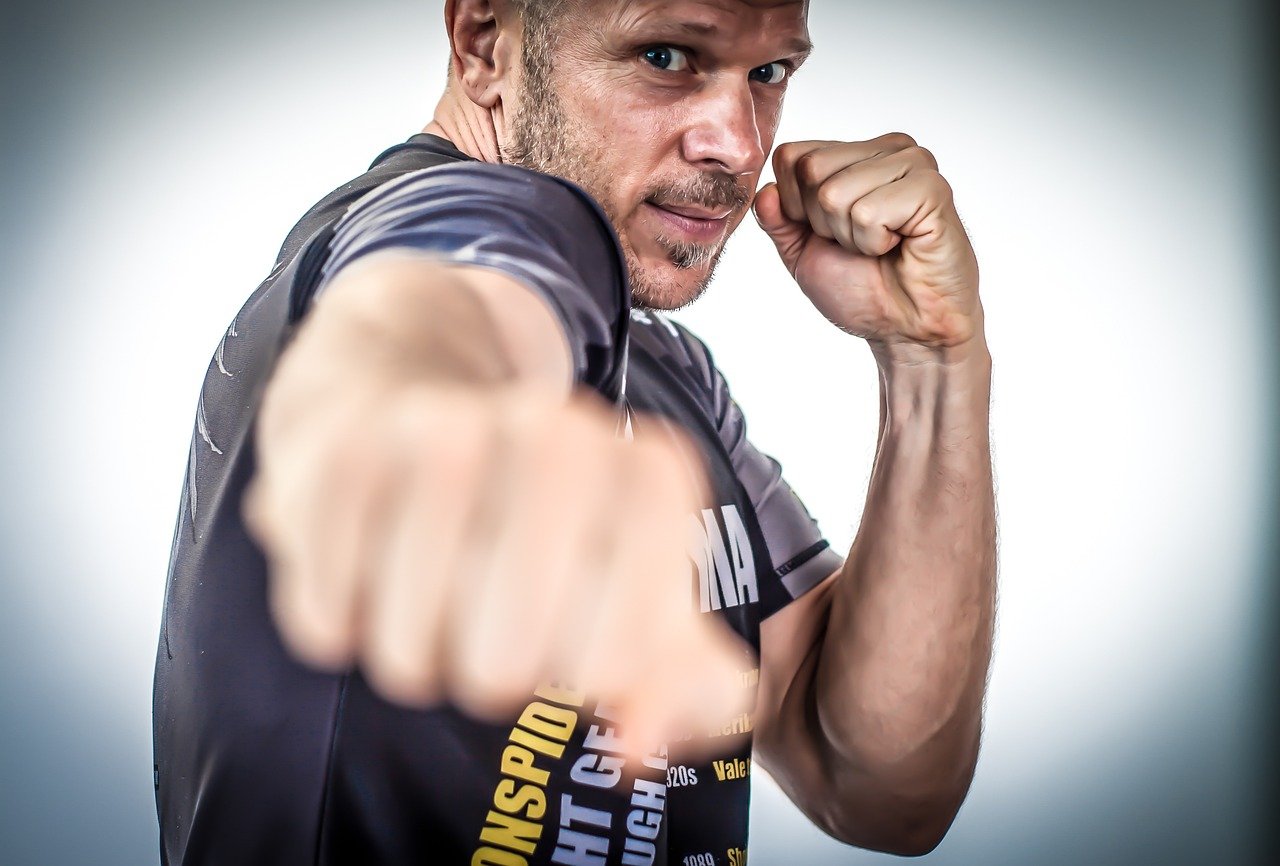In “Advanced Mobility Training For MMA Flexibility And Agility”, you’ll delve into a world where fine-tuning your body can make all the difference in the octagon. This article explores innovative techniques designed to enhance your flexibility and agility, crucial elements for any mixed martial artist. From dynamic stretches to specialized drills, you will discover proven strategies to elevate your performance and minimize the risk of injury. Get ready to unlock your full potential and stay ahead in your MMA training journey. Have you ever wondered how professional MMA fighters move with such grace, precision, and agility in the octagon? If so, you’re not alone. Achieving and maintaining peak performance in mixed martial arts (MMA) requires more than just strength and skill – it also hinges on advanced mobility.
Advanced Mobility Training for MMA Flexibility and Agility
In this guide, you’ll discover the secrets behind advanced mobility training, which can significantly boost your flexibility and agility, making you a more versatile and resilient fighter.

Understanding Mobility in MMA
Mobility is more than just being able to stretch your body to its limits. It encompasses the range of motion in your joints and your ability to move efficiently and effectively while maintaining control. In MMA, high mobility is essential for:
- Striking and Defending: The ability to deliver strikes from various angles and defend against attacks effectively.
- Grappling: Moving swiftly and fluidly during takedowns, submissions, and ground fighting.
- Injury Prevention: Reducing the risk of injuries during training and fights.
What is Mobility Training?
Mobility training focuses on improving the range of motion and functional movement patterns of your muscles and joints. It is a combination of flexibility, stability, strength, and control. Unlike traditional stretching, mobility training often includes dynamic movements that mimic the motions you use during combat.
Flexibility vs. Mobility: What’s the Difference?
Flexibility and mobility are often used interchangeably, but they are not the same thing. Understanding the difference is crucial for effective training.
- Flexibility: It refers to the ability of your muscles to lengthen. Think of it as your capacity to stretch.
- Mobility: It involves the range of motion in your joints combined with the strength and control to utilize that range effectively.
Both flexibility and mobility are necessary for optimal performance in MMA, but mobility training targets a more functional approach that integrates into your overall movement patterns.
The Importance of Agility in MMA
Agility is your ability to change direction swiftly and efficiently while maintaining balance and control. In MMA, agility is the key to outmaneuvering opponents, setting up strikes, and avoiding takedowns. Advanced mobility training plays a crucial role in enhancing your agility by improving your overall movement efficiency.
Components of Advanced Mobility Training
To develop superior mobility for MMA, it is essential to incorporate several key components into your training routine. These include:
Dynamic Stretching
Dynamic stretching involves moving parts of your body through a full range of motion in a controlled manner. It prepares your muscles for the vigorous activities of MMA.
- Leg Swings: Swing your legs forward, backward, and sideways to loosen up the hips and legs.
- Arm Circles: Perform large and controlled circular motions with your arms.
| Movement | Instructions | Repetitions |
|---|---|---|
| Leg Swings | Forward/backward, sideways | 10 each side |
| Arm Circles | Small to large circles | 10 each direction |
Functional Movement Drills
These drills are designed to replicate the movements you perform in the octagon, enhancing your coordination and body control.
- Sprawls: Mimic the movement of defending against a takedown.
- Lateral Shuffles: Improve your side-to-side agility.
| Drill | Instructions | Duration |
|---|---|---|
| Sprawls | Drop to the ground as if defending a takedown | 1 minute |
| Lateral Shuffles | Quickly move sideways maintaining a low stance | 1 minute |
Joint Mobility Exercises
Joint mobility exercises maintain the health of your joints and increase their range of motion. They often include controlled rotations and movements.
- Hip Circles: Rotate your hips in a circular motion to warm them up.
- Thoracic Rotations: Improve the mobility upper back and thoracic spine.
| Exercise | Instructions | Repetitions |
|---|---|---|
| Hip Circles | Circle hips clockwise and counterclockwise | 10 each direction |
| Thoracic Rotations | Rotate upper body left and right | 10 each side |
Strength and Stability Work
Combining mobility with strength and stability ensures your joints can handle the dynamic movements of MMA without getting injured.
- Single-leg Deadlifts: Enhance balance and stability in your legs.
- Pallof Press: Strengthen core stability while engaging rotational muscles.
| Exercise | Instructions | Sets & Reps |
|---|---|---|
| Single-leg Deadlifts | Balance on one leg, hinge from the hip | 3 sets of 10 |
| Pallof Press | Press a resistance band away from your body | 3 sets of 12 |
Foam Rolling and Myofascial Release
Using a foam roller or other tools can help release muscle tightness and increase blood flow to the targeted areas, promoting recovery and enhancing mobility.
- IT Band Roll: Target the iliotibial band on the side of your thigh.
- Thoracic Spine Roll: Loosen up the muscles along your upper back.
| Exercise | Instructions | Duration |
|---|---|---|
| IT Band Roll | Roll along the side of the thigh | 1-2 minutes each side |
| Thoracic Spine Roll | Roll from the middle to the upper back | 1-2 minutes |

Developing a Mobility Routine for MMA
Creating a structured mobility routine is crucial for consistency and progress. Here’s a step-by-step guide to help you develop your own MMA mobility routine.
Step 1: Assess Your Current Mobility
Before starting, you need to know your baseline. Perform some mobility tests for various joints and note down any limitations or discomforts. For example:
- Shoulder Mobility Test: Reach one arm over your head and down your back, and the other behind your back and up, trying to touch your fingertips. Repeat on the other side.
- Hip Flexibility Test: Perform a deep squat and hold it, observing how comfortable and balanced you feel.
Step 2: Identify Focus Areas
Based on your assessment, identify the areas that need the most attention. Common trouble spots for MMA fighters include the hips, shoulders, and ankles.
Step 3: Create a Balanced Routine
Incorporate exercises from each mobility component – dynamic stretching, functional movement drills, joint mobility exercises, strength and stability work, and myofascial release. Ensure your routine addresses all major joints and muscle groups.
Here’s a sample routine to get you started:
| Day | Focus Area | Duration |
|---|---|---|
| Monday | Full-body Dynamic Stretching & Functional Movement Drills | 30 minutes |
| Wednesday | Shoulder and Hip Joint Mobility Exercises | 30 minutes |
| Friday | Strength and Stability Work | 45 minutes |
| Sunday | Foam Rolling & Recovery | 20 minutes |
Step 4: Progress Gradually
As with any fitness program, the key to success is gradual progression. Start with basic exercises and slowly increase the intensity and complexity as your mobility improves. Listening to your body and avoiding over-exertion is crucial to prevent injuries.
Step 5: Integrate with MMA Training
Your mobility routine should complement your regular MMA training. Perform dynamic stretches and functional drills before sparring or drilling sessions to warm up effectively. Use foam rolling and recovery techniques after intense workouts to promote muscle health and flexibility.
Addressing Common Mobility Issues in MMA Fighters
Here are some common mobility issues faced by MMA fighters, along with targeted exercises to address them.
Tight Hip Flexors
Issue: Limited Range of Motion in Kicks and Takedowns
- Solution: Incorporate hip flexor stretches and activation exercises such as deep lunges and hip bridges.
Hip Flexor Stretch
| Exercise | Instructions | Repetitions |
|---|---|---|
| Hip Flexor Stretch | Lunge forward and stretch the hip | 30 seconds each side |
Hip Bridges
| Exercise | Instructions | Repetitions |
|---|---|---|
| Hip Bridges | Lift hips toward the ceiling | 3 sets of 15 |
Limited Shoulder Mobility
Issue: Ineffective Punches and Grappling Moves
- Solution: Use shoulder mobility exercises such as wall slides and band pull-aparts.
Wall Slides
| Exercise | Instructions | Repetitions |
|---|---|---|
| Wall Slides | Slide arms up and down a wall | 3 sets of 15 |
Band Pull-Aparts
| Exercise | Instructions | Repetitions |
|---|---|---|
| Band Pull-Aparts | Pull resistance band apart at chest level | 3 sets of 20 |
Stiff Ankles
Issue: Poor Footwork and Balance
- Solution: Enhance ankle mobility with exercises such as ankle circles and calf stretches.
Ankle Circles
| Exercise | Instructions | Repetitions |
|---|---|---|
| Ankle Circles | Rotate each ankle in a circular motion | 20 each direction |
Calf Stretches
| Exercise | Instructions | Repetitions |
|---|---|---|
| Calf Stretches | Stretch the calf against a wall | 30 seconds each side |

The Role of Balance and Coordination
Balance and coordination are often overlooked but are vital components of mobility. Excellent balance ensures that you remain stable during complex maneuvers, while coordination allows for fluid transitions between movements.
Balance Drills
Incorporate balance drills such as single-leg stands and dynamic balance exercises to improve your stability.
Single-leg Stands
| Exercise | Instructions | Repetitions |
|---|---|---|
| Single-leg Stands | Balance on one foot | 1 minute each side |
Coordination Drills
Enhance your coordination with ladder drills and complex movement patterns.
Ladder Drills
| Exercise | Instructions | Duration |
|---|---|---|
| Ladder Drills | Move through a ladder with various foot patterns | 5 minutes |
Recovery and Injury Prevention
Recovery is a crucial aspect of any training regimen, especially in a high-impact sport like MMA. Advanced mobility training can help you recover faster and prevent injuries.
Active Recovery
Active recovery involves low-intensity exercises that promote blood flow and muscle regeneration without causing additional stress.
- Light Jogging: Loosen up muscles and maintain cardiovascular health.
- Swimming: Provides a full-body workout while being easy on the joints.
| Exercise | Instructions | Duration |
|---|---|---|
| Light Jogging | Run at a comfortable pace | 20 minutes |
| Swimming | Swim laps at a moderate intensity | 30 minutes |
Sleep and Nutrition
Proper sleep and nutrition are vital for recovery. Ensure you get at least 7-8 hours of sleep and consume a balanced diet rich in proteins, healthy fats, and carbohydrates.
Mindfulness and Relaxation Techniques
Stress reduction can also play a significant role in recovery. Practice mindfulness and relaxation techniques such as deep breathing exercises, meditation, or yoga.
Advanced Techniques for Enhanced Mobility
Once you’ve mastered the basics, you can explore advanced techniques to push your mobility to the next level.
PNF Stretching
Proprioceptive Neuromuscular Facilitation (PNF) stretching involves both stretching and contracting the muscle group being targeted. This method is highly effective in increasing flexibility and range of motion.
- Hamstring PNF Stretch: Contract the hamstring by gently pushing against resistance, then relax and stretch further.
Functional Range Conditioning (FRC)
FRC is a system of mobility training that aims to increase the active, usable ranges of motion for all your joints. It involves various controlled articular rotations (CARs) and progressive overload techniques.
- Hip CARs: Rotate your hip in its full range of motion to maintain and enhance joint health.
| Exercise | Instructions | Repetitions |
|---|---|---|
| Hamstring PNF Stretch | Contract and stretch hamstrings | 3 sets of 10 |
| Hip CARs | Perform rotations in the hip joint’s full range | 3 sets of 5 |
Resistance Band Mobility
Using resistance bands adds intensity and variety to your mobility exercises. They help activate smaller stabilizing muscles and improve joint strength.
- Lateral Band Walks: Place a resistance band around your thighs and take side steps to engage the hip abductors.
| Exercise | Instructions | Repetitions |
|---|---|---|
| Lateral Band Walks | Side-step with resistance band around thighs | 3 sets of 20 |
Consistency is Key
As with any training, consistency is critical to seeing results. Make advanced mobility training a regular part of your fitness regimen. Monitor your progress, adjust your routine as needed, and stay committed to your goals.
Final Thoughts
Advanced mobility training is not just an added bonus for MMA fighters – it is a necessity. By incorporating a well-rounded mobility routine into your training, you can improve your flexibility, agility, and overall performance in the octagon. Remember, the journey to peak performance is gradual, so be patient and persistent, and you will see significant improvements over time.
Now, it’s your turn to practice these techniques and see how advanced mobility training can elevate your MMA game. Good luck, and stay agile!

